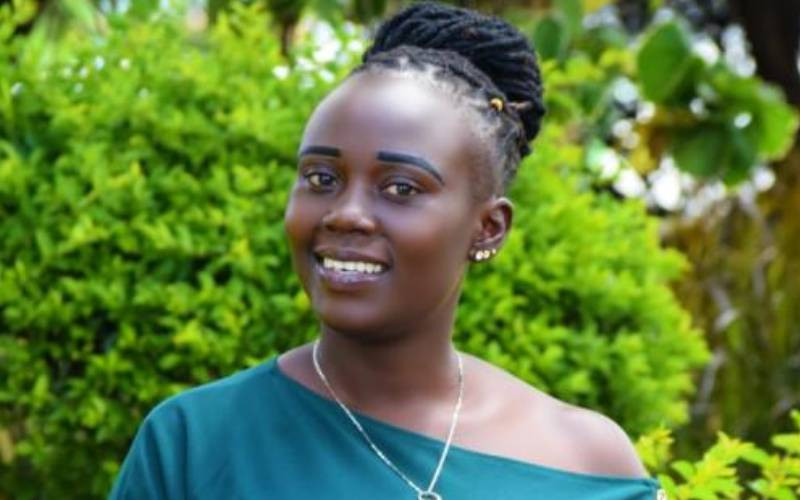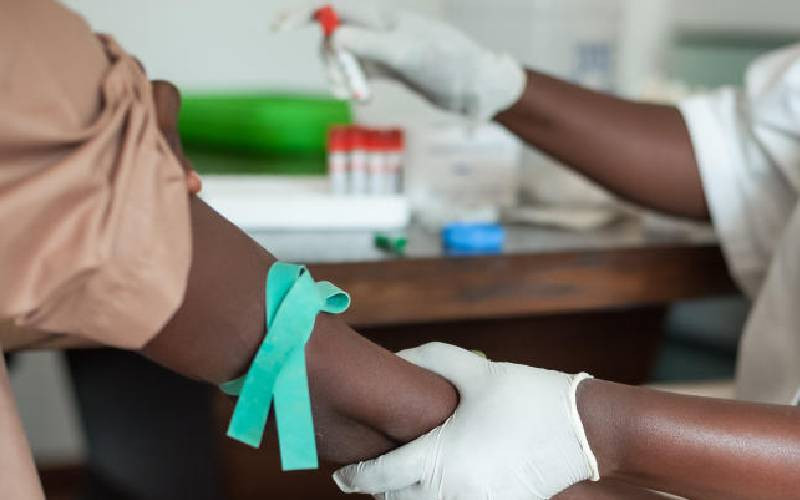 A cancer patient being prepared for radiation treatment at the Kenyatta National Hospital. [Photo: File/Standard]
A cancer patient being prepared for radiation treatment at the Kenyatta National Hospital. [Photo: File/Standard]
By Ally Jamah
Kenya: Cancer of the oesophagus has emerged as the top killer cancer in the country in recent years, thereby presenting a big challenge to the Government.
As the world marks the World Cancer Day today, Kenya is on the global map as being among the top seven countries hit hardest by this type of cancer.
According to the Ministry of Health guidelines for cancer management released recently, oesophagus cancer ranks among the top three strains of the disease in the country.
“The leading cancers in women are breast, cervical and oesophagus. In men, oesophagus, prostate cancer and Kaposi sarcoma are the most common,” says the handbook.
A study conducted at Eldoret’s Moi Teaching and Referral Hospital in 2005 concluded that oesophageal cancer was the highest form of cancer diagnosed at the facility, far ahead of cancers of the cervix, breast, and blood, which were previously thought to be more common.
The study was published in the Journal of African Health Sciences.
Dr Ahmed Kalebi of Pathologists Lancet Kenya, a network of laboratories that tests for this type of cancer, says Kenyans should be on the lookout for common symptoms of the disease so that they are not caught unawares after the disease has advanced.
The major symptoms include painful swallowing of food and drink, pain in the middle part of the chest, hoarseness of voice, frequent coughs and weight loss. Unfortunately, some of the major symptoms, such difficulty in swallowing solid foods, may not appear until the cancer is far advanced.
“Because this disease shares many of its symptoms with other diseases, some doctors usually miss it during their diagnosis, leaving the cancer to progress unchecked. They may mistake it for sore throat, or normal heart burn,” he said.
He added: “The only hope for detecting curable early stages of the disease is through a high index of suspicion by doctors and prompt investigations of those at high risk and those with difficulty in swallowing.”
Dr Muthoni Kirimi, an anatomic pathologist in Nairobi, says the exact cause of this type of cancer is not known yet, but risk of developing it increases with age, tobacco and alcohol use, and frequent reflux of stomach acids during heart burn. Men generally have higher risks of contracting this cancer than women.
She explained that a combination of many types of treatments is used including surgery, especially when the disease has not spread significantly from its original location.
Radiation treatment
“But when the disease has advanced, surgery may be combined with radiation treatment and/or chemotherapy. Radiation treatment use X-rays or other high-energy rays to kill off cancer cells, while chemotherapy uses drugs to prevent tumour growth and to reduce symptoms resulting from the tumor, such as difficulty in swallowing or bleeding,” she said.
However, she warned that using radiation on the oesophagus may cause a host of side effects, including hair loss, skin ulceration, further pain or difficulty with swallowing due to inflammation of the oesophagus, and frequent heart burns.
Other side effects include loss of appetite, nausea, vomiting, weight loss and weakness, inflammation of the lung, fever, cough and difficulty in breathing, chest pains, bleeding, and degrading of body immunity.
Dr Izaq Odongo, head of the Cancer Unit has warned against the habit of ignoring any difficulty in swallowing.
“Normally, people go to the hospital when they cannot swallow any food. But before that, they usually don’t bother, thinking the problem will go away. Kenyans should be aware that this disease is very common and they need to protect themselves,” he said.
To test the disease, several techniques are usually used including the Barium Swallow, in which a thick, chalky liquid called barium is swallowed to coat the walls of the oesophagus, after which an X-ray is done. This test can show any irregularities in the normally smooth surface of the inner lining of the esophagus.
Other tests that may be deployed include endoscopy, in which a flexible, narrow tube with a video camera and light are inserted into the oesophagus through the mouth to see if unusual growths are there or determine the extent of their spread.
The doctor can use special instruments to collect tissue samples from any abnormal areas along the oesophagus for tests to see if they are indeed cancerous. Specialised medical imaging techniques can also be used to take detailed images of the oesophagus to locate any abnormal growths.
 The Standard Group Plc is a multi-media organization with investments in media platforms spanning newspaper print
operations, television, radio broadcasting, digital and online services. The Standard Group is recognized as a
leading multi-media house in Kenya with a key influence in matters of national and international interest.
The Standard Group Plc is a multi-media organization with investments in media platforms spanning newspaper print
operations, television, radio broadcasting, digital and online services. The Standard Group is recognized as a
leading multi-media house in Kenya with a key influence in matters of national and international interest.











